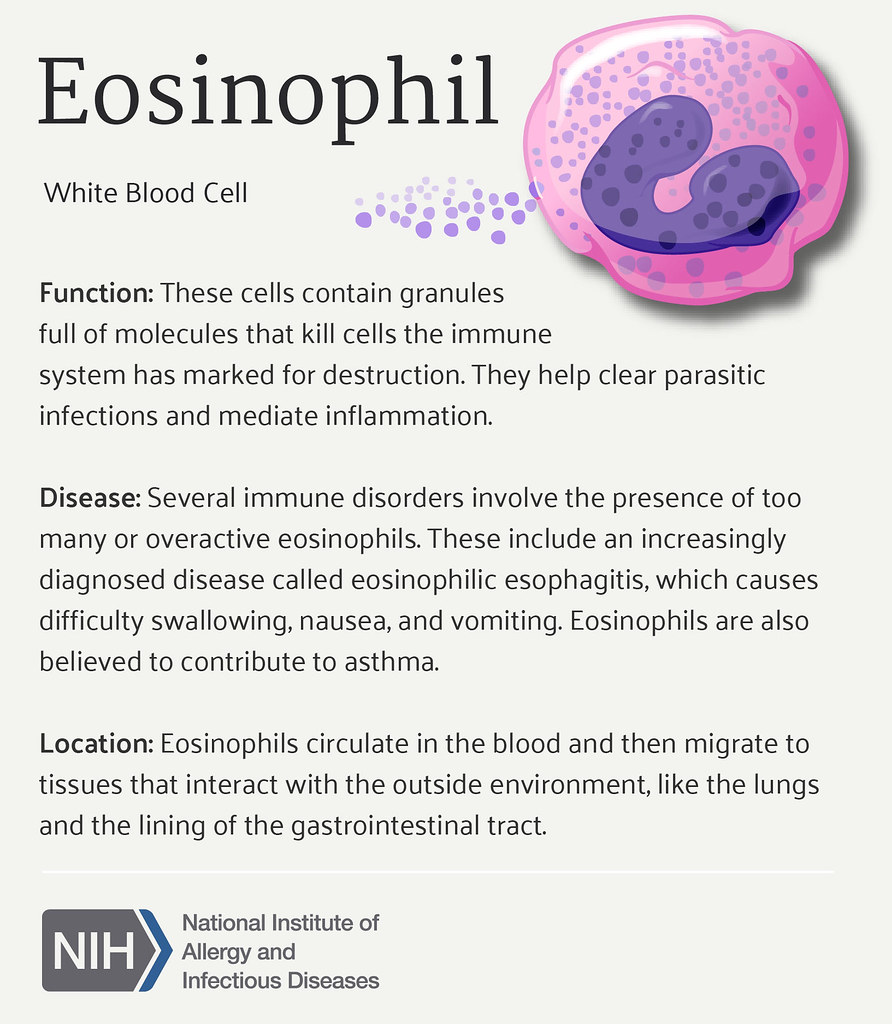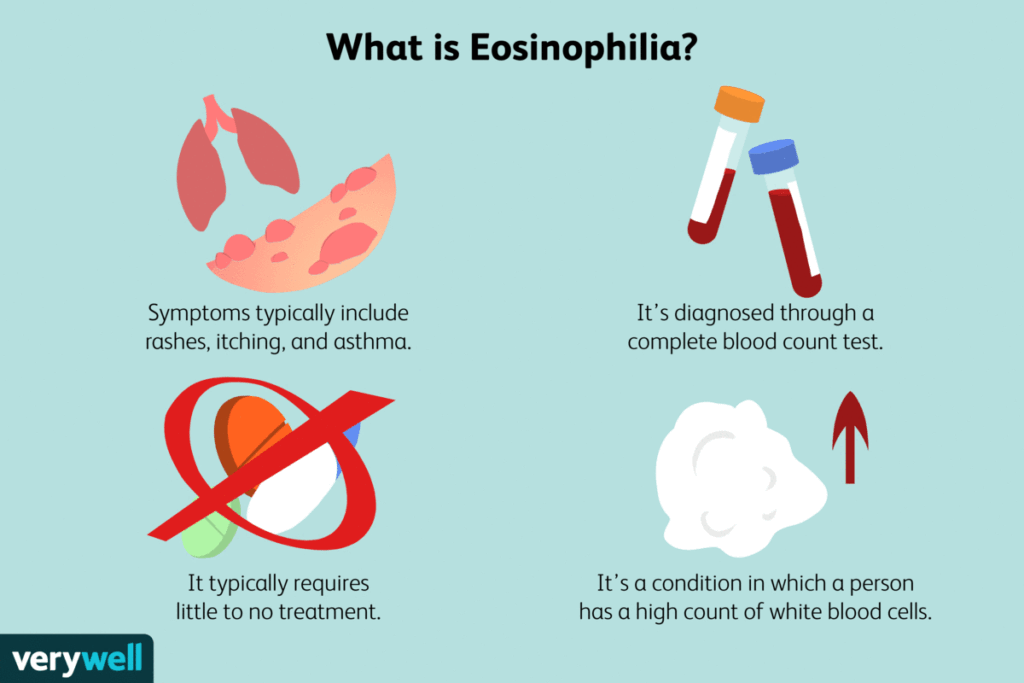
What is an eosinophil?
Eosinophils are a cell of the immune system that are found in inflammatory processes, especially allergic diseases. They move to inflamed areas, capture substances, and kill cells. They are important in parasitic and bactericidal activity, inflammatory responses, and allergic reactions.
What is eosinophilia?
When the body produces too many eosinophils, it is called eosinophilia. These white blood cells can infiltrate tissues and organs causing inflammation and organ damage. The skin, lungs, heart, and the nervous system may be affected.
What is considered too many?
Zero to 450 eosinophils per cubic meter of blood is considered within normal limits.
Causes of high eosinophilic levels:
Eosinophilia can be acute, caused by infections, or if chronic, caused by disorders. Eosinophilic disorders are diagnosed based off the location where the eosinophils are elevated. This includes diseases such as eosinophilic esophagitis and hypereosinophilic syndrome.
What should I do if I see high eosinophil levels on my lab work?
If you notice high eosinophil levels on your lab work, you should contact your provider to determine if you need further workup.

Source: Cincinnati Center for Eosinophilic Disorders
https://www.cincinnatichildrens.org/service/c/eosinophilic-disorders/conditions/eosinophil
Category: Uncategorized



